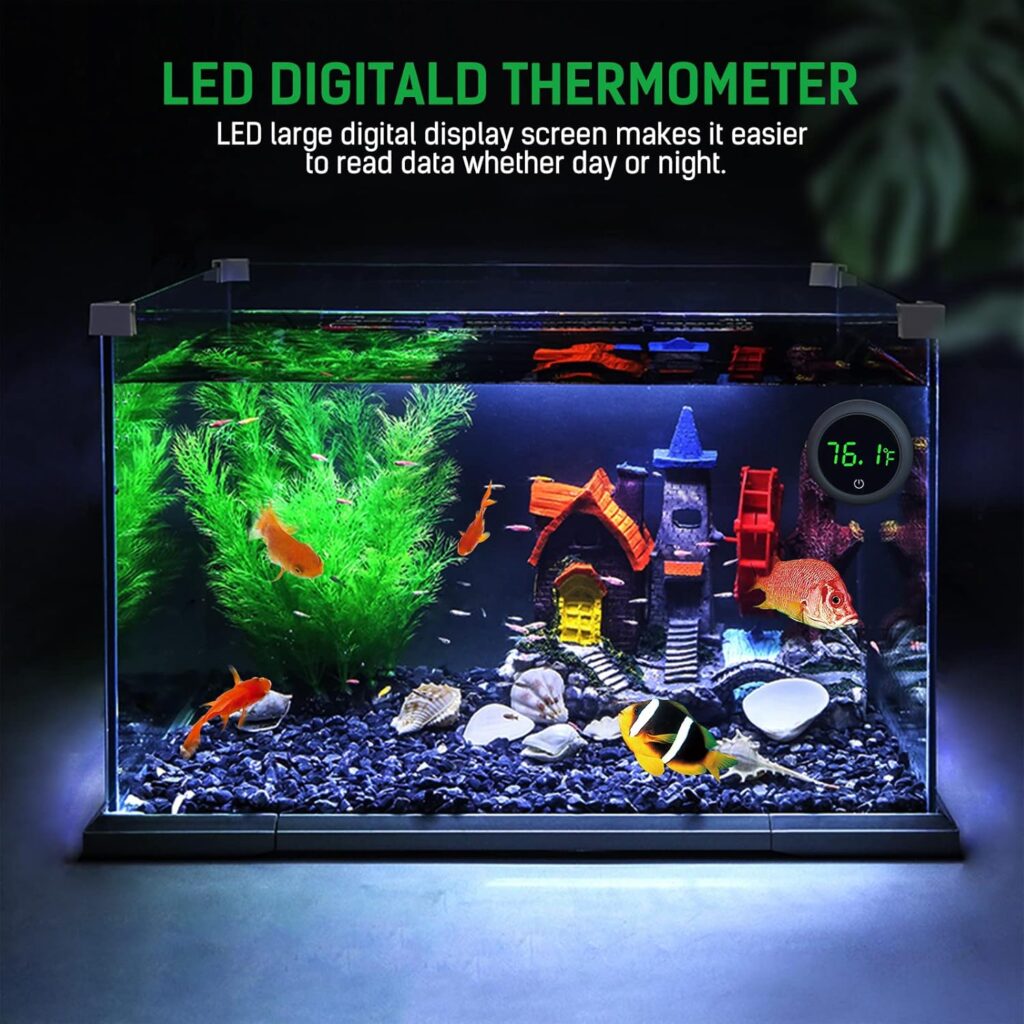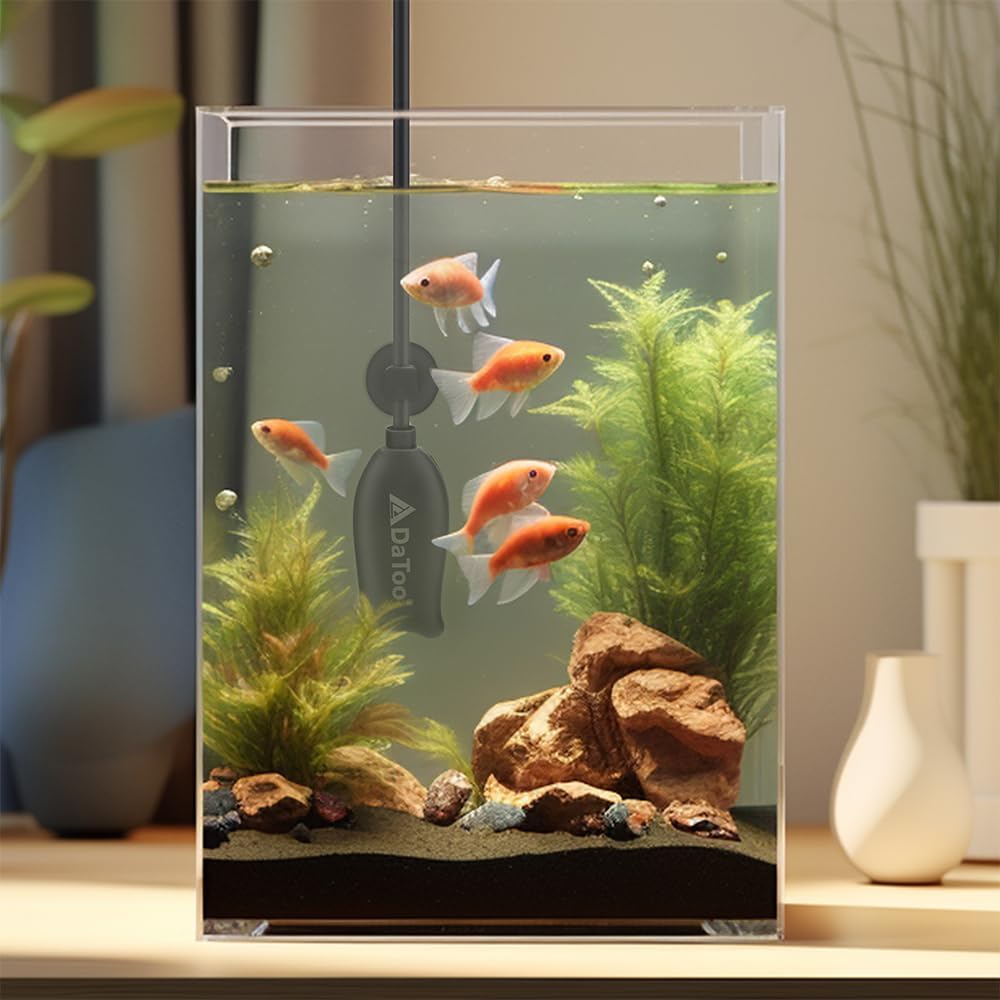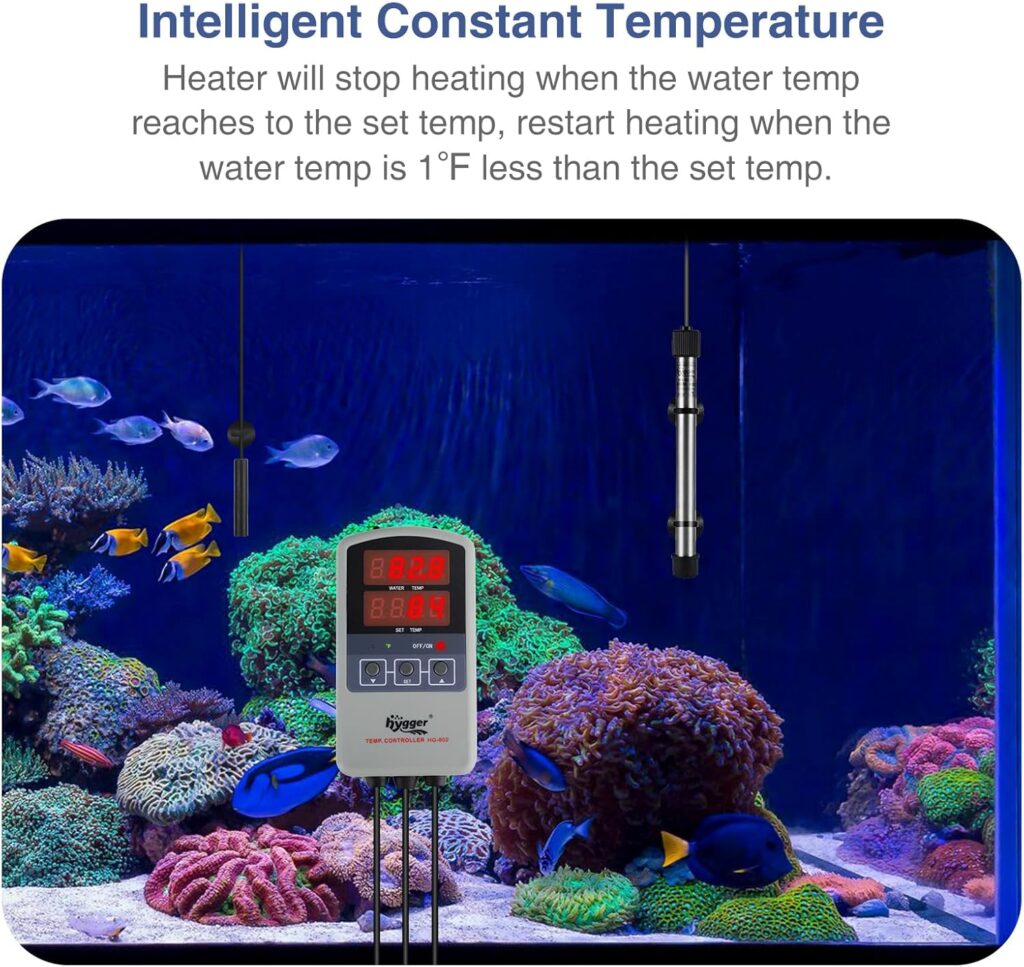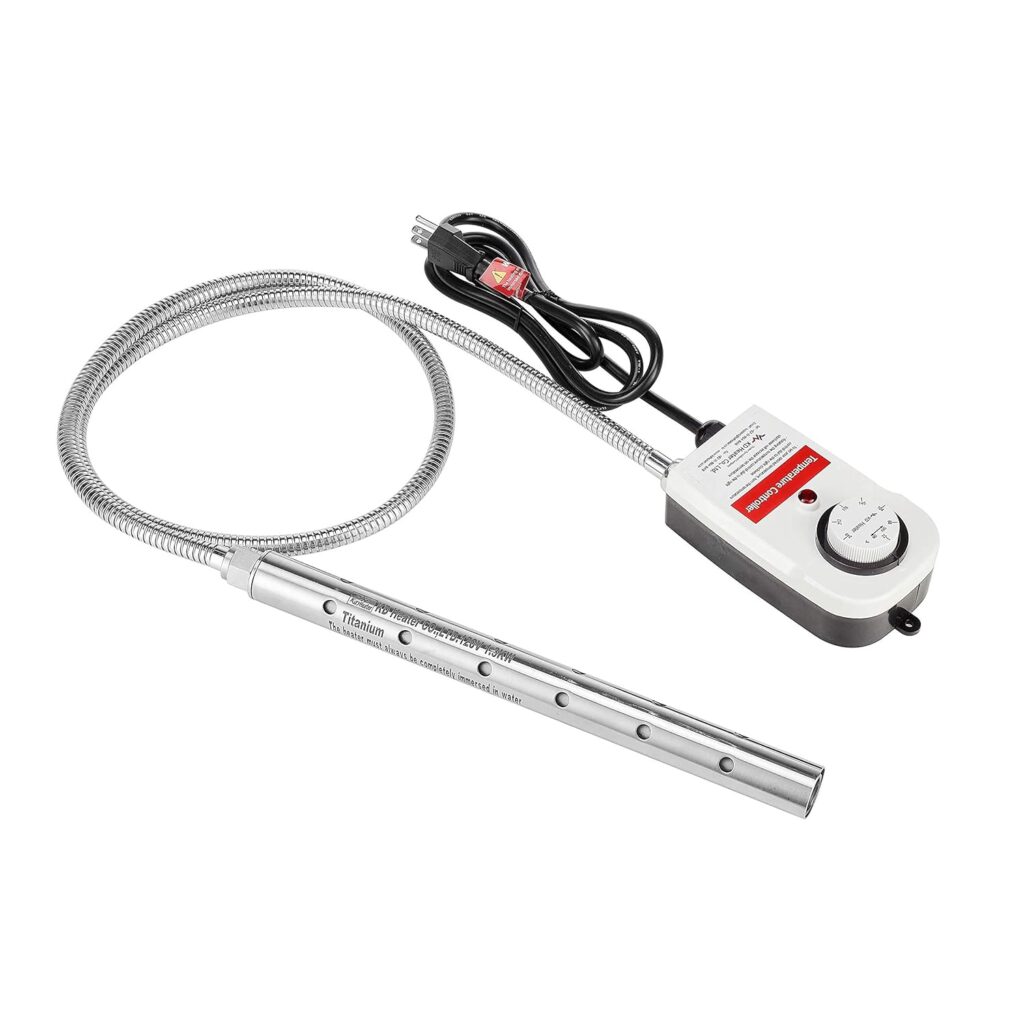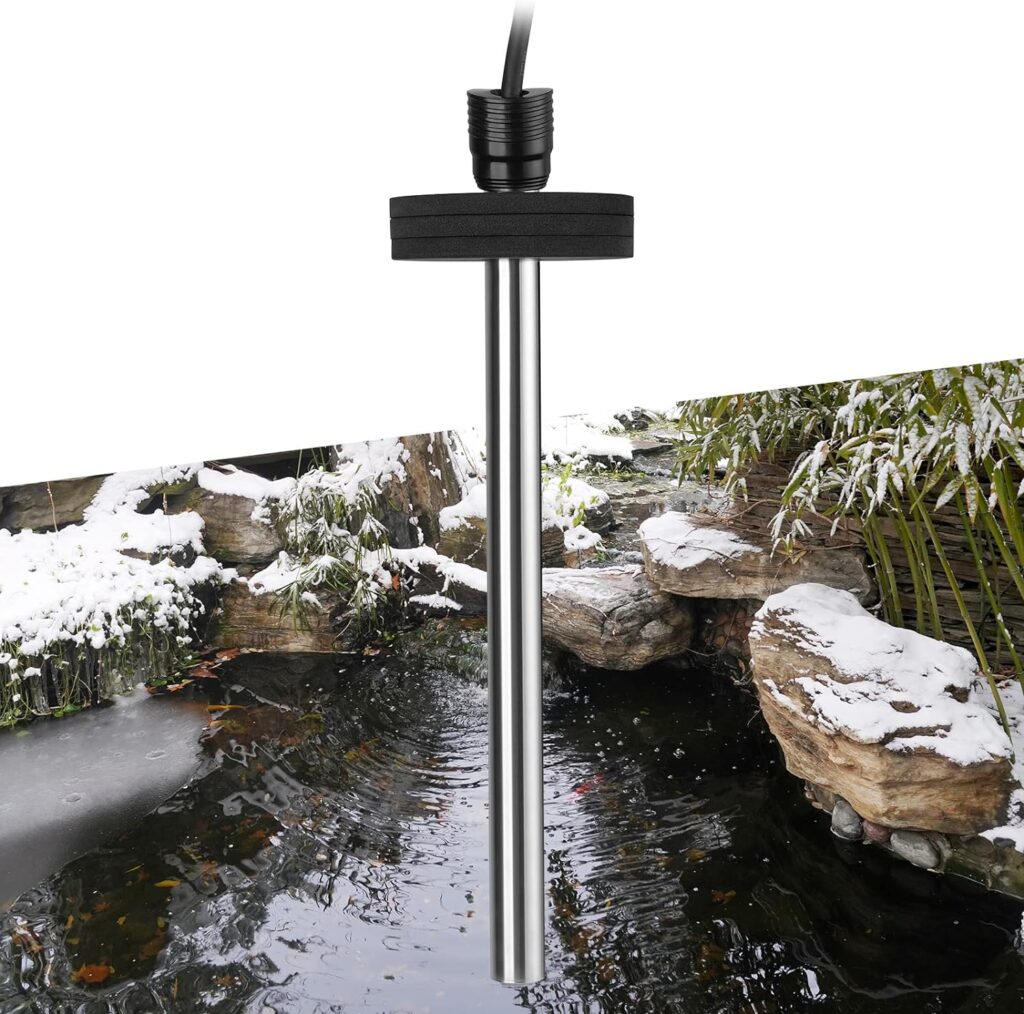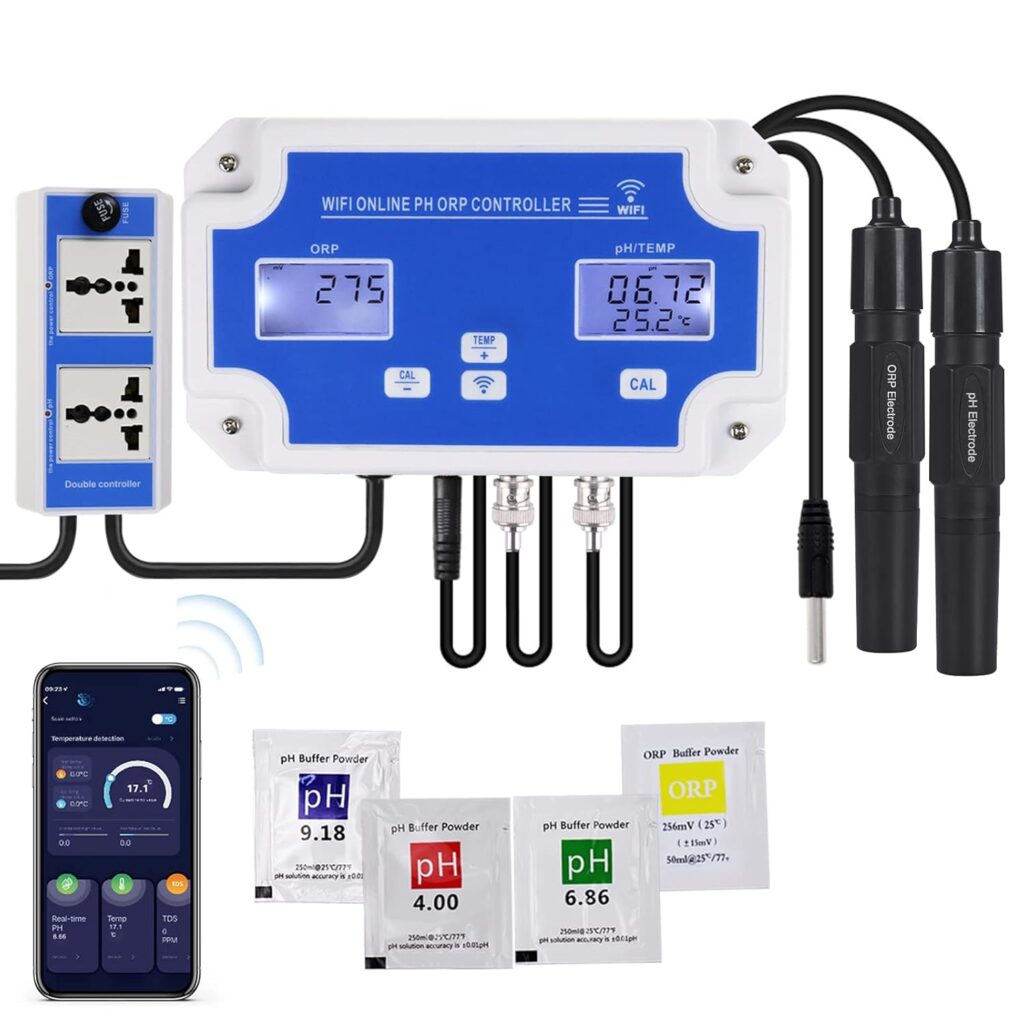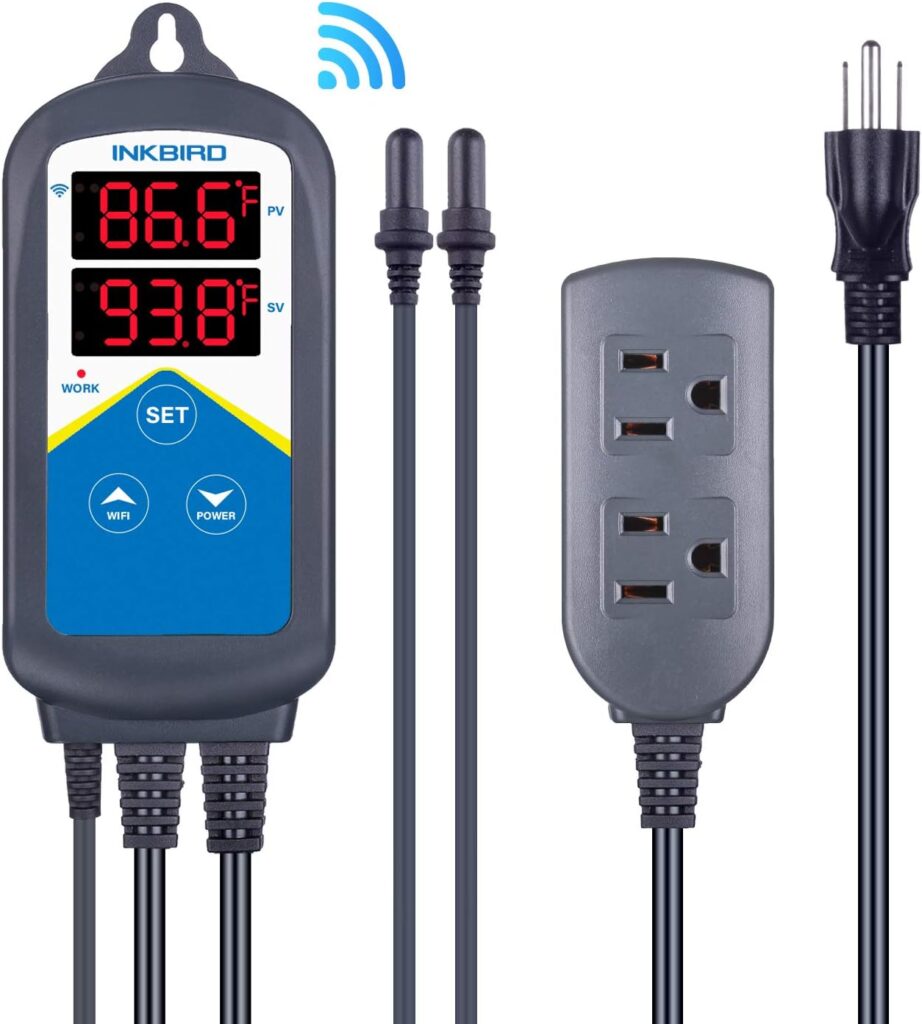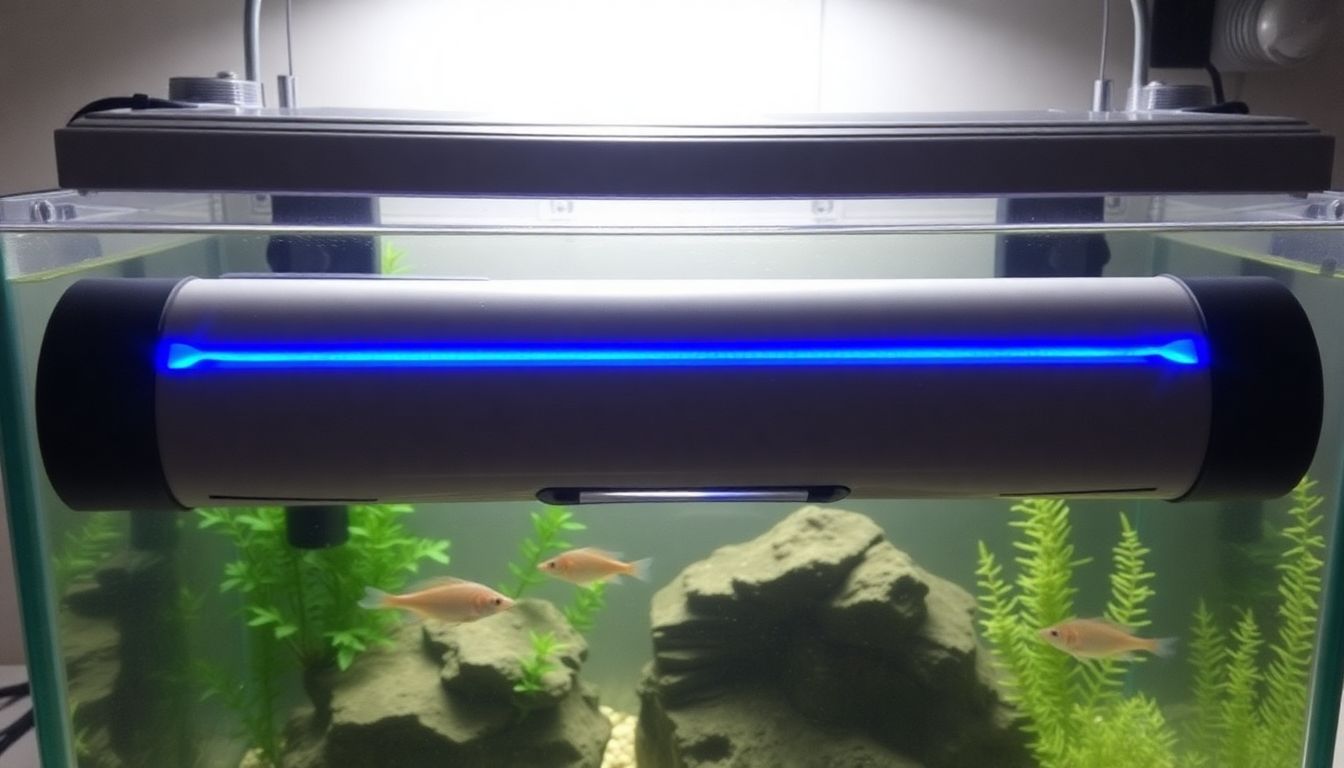
As an aquarium enthusiast with over two decades of experience, I’ve learned that selecting the right heater is crucial for maintaining a healthy aquatic environment. The perfect heater confirms your fish thrive by replicating their natural habitat and supporting proper metabolic function.
Understanding Aquarium Heater Basics
Most tropical fish flourish in water temperatures between 75°F and 80°F (24°C to 27°C). This temperature range is essential for their health and well-being.
Fluctuations can stress fish, weaken their immune systems, and potentially lead to disease outbreaks.
A reliable heater is therefore one of the most critical investments for your aquarium.
Types of Aquarium Heaters
Submersible Heaters
Submersible heaters are the most versatile and common option. They can be fully submerged in water and placed either vertically or horizontally.
I prefer these heaters for their flexibility in placement and ability to distribute heat evenly throughout the tank.
Hang-on Heaters
While less common now, hang-on heaters attach to the side of the tank and are partially submerged. They’re easy to adjust but may be less effective than fully submersible models.
Inline Heaters
Installed outside the tank, typically in the filter’s return line, inline heaters are great for reducing in-tank clutter. They’re especially useful in reef tanks where aesthetics are a priority.
Substrate Heaters
Placed under the gravel or substrate, these heaters can be useful for planted tanks by promoting root growth. However, they’re less common and can be challenging to maintain.
Filter Heaters
These units mix heating and filtration, which can be space-saving but may limit your options if you need to upgrade or replace either component.
The Absolute Best Aquarium Heaters!
Key Features to Look For
When shopping for the best fish tank heater, consider these essential features:
Wattage
The general rule of thumb is to use 3-5 watts per gallon of water. For example, a 50-gallon tank would need a heater between 150-250 watts.
Factors like room temperature and tank location can affect this, so it’s often better to choose a slightly higher wattage.
Accuracy
Look for heaters with precise temperature control, ideally within ±0.5°F. Digital models often offer better accuracy than analog ones.
Safety Features
Automatic shut-off mechanisms, overheat protection, and shatterproof construction are crucial safety elements that can prevent disasters.
Material
Titanium heaters have become increasingly popular because of their superior durability and heat conductivity compared to glass models. They’re especially good for larger tanks or setups with more boisterous fish.
Adjustability
Easy-to-use temperature adjustment mechanisms are a must. Some high-end models even offer remote control or smartphone app integration.
Display
A clear, easy-to-read display can make monitoring and adjusting your tank’s temperature much more convenient.
Top Picks for Best Fish Tank Heaters
After years of experience and countless hours of research, here are my top recommendations:
Known for it’s German engineering, this fully submersible heater is incredibly accurate and durable. It’s my go-to for most setups.
The Eheim Jäger TruTemp offers precise temperature control and is available in various wattages to suit different tank sizes.
With it’s digital display and dual sensors, this heater offers precise control and easy monitoring. The Fluval E series features an LCD temperature display and a safety shut-off feature if the water level drops too low.
If you’re looking for a sleek, modern design, this ultra-slim heater with it’s shatterproof outer casing is an excellent choice. The Neo-Therm is fully submersible and features an easy-to-use set temperature control.
4. Hygger Titanium Tube Submersible Pinpoint Heater
For those who prioritize durability and corrosion resistance, especially in saltwater tanks, this titanium heater is hard to beat. It features an external controller for easy temperature adjustments and monitoring.
5. Aqueon Pro Adjustable Heater
With it’s nearly indestructible polymer construction and lifetime warranty, this heater offers great peace of mind. It’s fully submersible and features an auto shut-off feature for safety.
Installation and Maintenance Tips
Proper installation and maintenance are key to getting the most out of your aquarium heater:
Placement
Place heaters near areas of good water flow to ensure even heat distribution. I often position mine near the output of my filter.
This helps circulate the heated water throughout the tank more efficiently.
Temperature Verification
Always use a separate thermometer to verify your heater’s accuracy. Don’t rely solely on the heater’s built-in thermostat.
I recommend using a digital thermometer for the most precise readings.
Regular Cleaning
Clean your heater regularly to remove mineral deposits and algae buildup. A soft toothbrush works well for this task.
Be gentle to avoid damaging the heater’s surface.
Cord and Connection Inspection
Inspect cords and connections periodically for signs of wear or damage. Replace any heater that shows signs of water ingress immediately.
This is crucial for the safety of your fish and your home.
Multiple Heaters for Larger Tanks
For larger tanks, consider using two smaller heaters instead of one large one. This provides redundancy and more even heat distribution.
If one heater fails, the other can still maintain a safe temperature until you can replace the faulty unit.
Common Pitfalls to Avoid
Even experienced aquarists can fall into these traps:
Underestimating Heater Needs
Don’t skimp on wattage. An underpowered heater will struggle to maintain temperature and may burn out prematurely.
It’s better to have slightly more power than you need as opposed to not enough.
Neglecting Calibration
Many heaters need to be calibrated when first installed. Use a reliable thermometer to ensure your heater is maintaining the fix temperature. Some heaters may have a slight discrepancy between the set temperature and the actual water temperature.
Forgetting About Room Temperature
The ambient temperature of your room can significantly affect your tank’s heating needs. Be prepared to adjust your heater seasonally. In colder months, you may need to increase the heater’s setting to maintain a stable tank temperature.
Ignoring Temperature Gradients
In larger tanks, temperature can vary in different areas. Ensure good water circulation to maintain even heating throughout the tank.
Consider using powerheads or adjusting your filter output to improve water movement.
Overlooking Backup Options
Power outages or heater failures can be disastrous. Have a backup heater or a battery-powered air pump to circulate water in emergencies.
Some aquarists keep heat packs on hand for short-term temperature maintenance during power outages.
Adapting to Different Scenarios
Different tank setups may need different heating approaches:
Nano Tanks
These small tanks can heat up quickly. Look for low-wattage heaters specifically designed for nano tanks to avoid overheating.
Some nano heaters come with built-in thermostats to help maintain stable temperatures in these smaller volumes.
Planted Tanks
Consider combining a standard heater with a substrate heater to promote healthy root growth. This dual-heating approach can create a more natural temperature gradient in the tank, benefiting both plants and fish.
Breeding Tanks
Some species need temperature fluctuations for breeding. Programmable heaters can be invaluable in these setups.
They allow you to mimic natural temperature changes that might trigger spawning behavior in certain fish species.
Saltwater Tanks
Opt for titanium heaters to resist corrosion from salt creep. Saltwater is more corrosive than freshwater, so durability is key.
Titanium heaters also tend to have better heat transfer properties, making them more effective in marine setups.
For year-round outdoor setups, you may need to mix heaters with chillers to maintain stable temperatures across seasons. Consider using a pond-specific heating system that can handle the larger water volume and exposure to the elements.
Advanced Heating Techniques
As you become more experienced, you might want to explore more sophisticated heating methods:
These devices offer extremely precise temperature control by constantly adjusting heater output. PID (Proportional-Integral-Derivative) controllers can maintain tank temperatures within a fraction of a degree, which can be crucial for sensitive species or breeding setups.
Heat Pumps
For very large tanks or ponds, heat pumps can be more energy-efficient than traditional heaters. They work by transferring heat from the surrounding air into the water, similar to how an air conditioner operates in reverse.
Solar Heating
For outdoor setups, solar heating can be an eco-friendly option, though it usually requires backup heating for cloudy days or nights. Solar heating systems can be integrated with traditional heaters to provide a more sustainable heating solution.
The latest generation of aquarium heaters includes WiFi-enabled models that can be monitored and controlled via smartphone apps. These smart heaters allow you to adjust temperatures remotely and receive alerts if there are any issues with your tank’s heating system.
Most Reliable Aquarium Heater?
Exercises to Reinforce Your Heating Knowledge
To become a true expert in aquarium heating, try these practical exercises:
1. Wattage Calculation
Calculate the ideal wattage for your tank based on it’s volume and the difference between room temperature and desired water temperature. This will help you understand how to choose the right heater for any tank size.
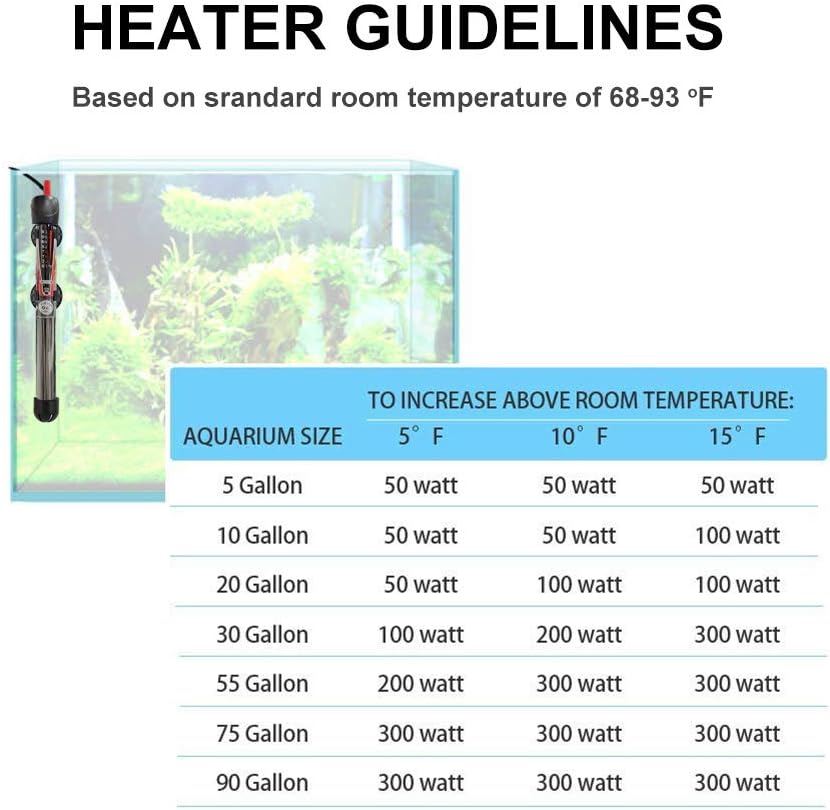
2. Temperature Mapping
Create a temperature map of your tank by measuring the temperature at different points. Use this to improve heater and powerhead placement.
This exercise can reveal cold spots or areas of poor circulation in your tank.
3. Power Outage Simulation
Simulate a power outage by unplugging your heater. Monitor how quickly the temperature drops and develop an emergency heating plan.
This will prepare you for real emergencies and help you understand your tank’s thermal properties.
4. Species-Specific Temperature Research
Research the specific temperature requirements of each species in your tank. Create a chart showing their ideal ranges and any seasonal variations they might experience in nature.
This knowledge will help you create a more natural and comfortable environment for your fish.
5. Heater Placement Experimentation
Experiment with different heater placements in your tank and watch how it affects overall temperature distribution and stability. This will give you a practical understanding of how water flow and heater positioning interact.

Frequently Asked Questions
How many watts do I need for my fish tank heater?
The general rule is 3-5 watts per gallon of water. For a 20-gallon tank, you’d need a 60-100 watt heater.
However, factors like room temperature and tank location can affect this, so it’s often better to choose a slightly higher wattage.
Can I use two heaters in one aquarium?
Yes, using two heaters can be beneficial, especially in larger tanks. It provides more even heat distribution and a backup if one heater fails.
Just ensure the combined wattage is appropriate for your tank size.
How do I know if my aquarium heater is working properly?
Use a separate thermometer to verify the water temperature. If it matches the heater’s setting and stays stable, your heater is likely working correctly.
Also, look for the heater’s indicator light turning on and off as it maintains the temperature.
Where should I place my aquarium heater?
Place the heater near areas of good water flow, such as near the filter output. This confirms even heat distribution throughout the tank.
For larger tanks, you might want to place heaters at opposite ends for better coverage.
How often should I replace my aquarium heater?
There’s no set timeframe, but it’s a good idea to replace your heater every 1-2 years or if you notice any signs of wear, damage, or inconsistent performance. Regular maintenance can extend a heater’s lifespan.
Can aquarium heaters overheat?
Yes, heaters can malfunction and overheat. That’s why it’s crucial to choose a heater with safety features like automatic shut-off mechanisms and to regularly check it’s performance with a separate thermometer.
Are titanium heaters better than glass heaters?
Titanium heaters are generally more durable and have better heat conductivity than glass heaters. They’re less likely to crack or break, making them a good choice for larger tanks or setups with more active fish.
How do I clean my aquarium heater?
Unplug the heater and remove it from the tank. Gently clean it with a soft brush or cloth to remove algae or mineral deposits.
Never submerge the top portion of the heater where the electrical components are located.
Can I use a freshwater heater in a saltwater tank?
While some heaters can be used in both fresh and saltwater, it’s best to choose a heater specifically designed for saltwater use. These are typically made of more corrosion-resistant materials like titanium.
What should I do if my heater stops working?
First, check if it’s plugged in and the settings are fix. If it’s still not working, replace it immediately with a backup heater.
In the meantime, you can use heat lamps or float sealed bottles of warm water to maintain temperature.
The Truth About Aquarium Heaters
Key Takeaways
- Choose a heater with suitable wattage for your tank size, considering factors like room temperature and tank location.
- Prioritize safety features like automatic shut-off and shatterproof construction.
- Regular maintenance and calibration are crucial for optimal heater performance.
- Always use a separate thermometer to verify your heater’s accuracy.
- Consider redundancy in larger tanks by using multiple heaters.





